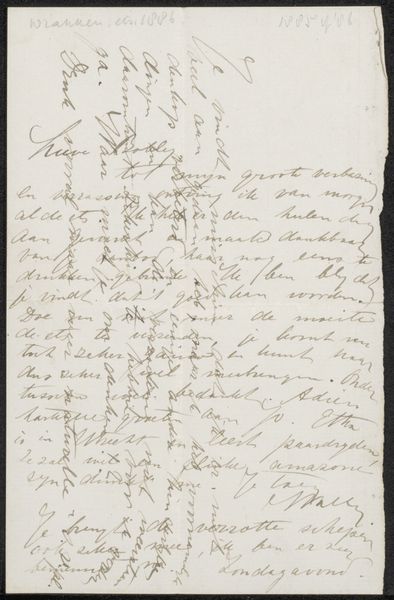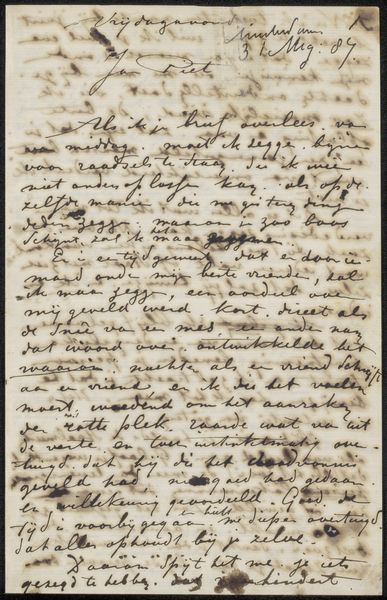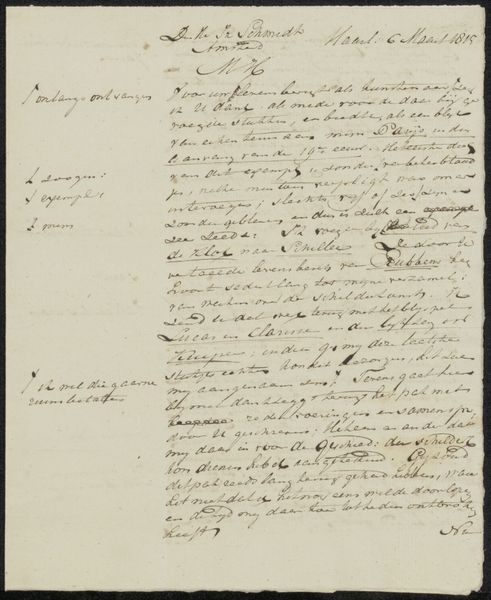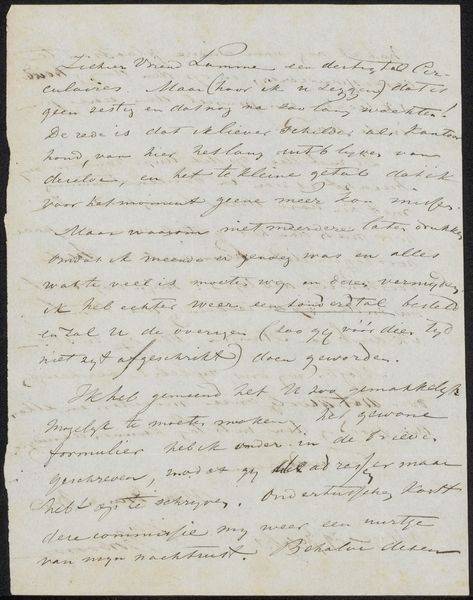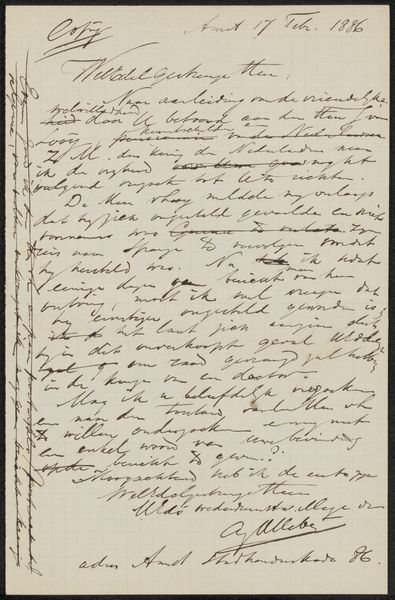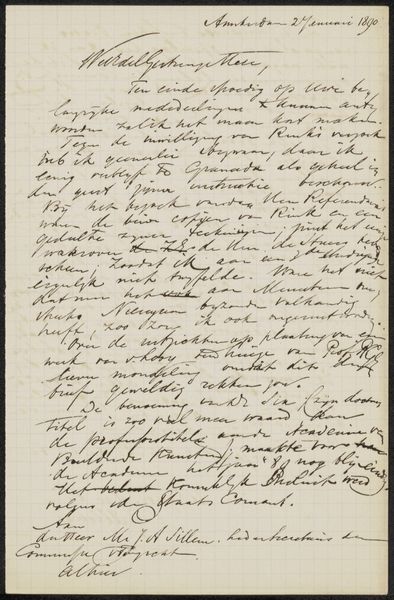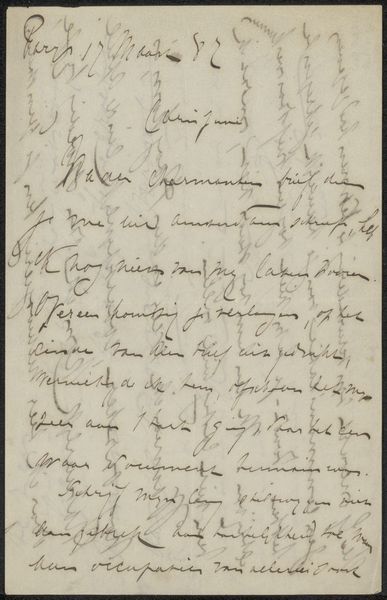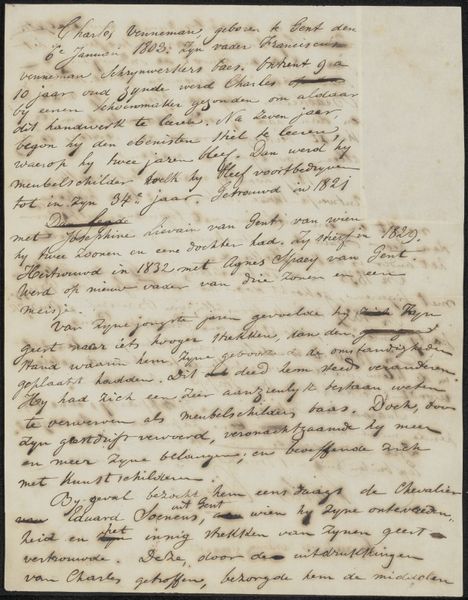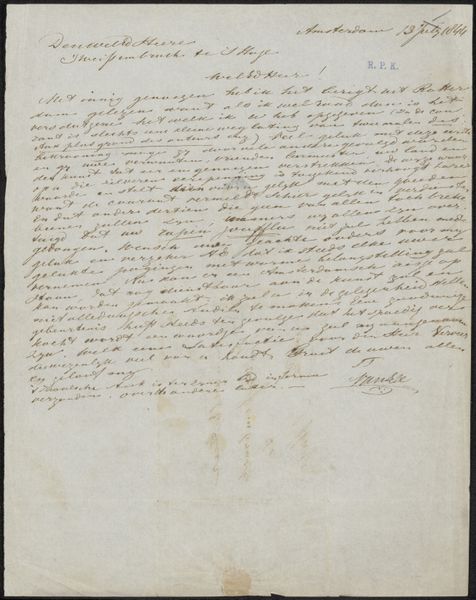
drawing, paper, ink, pen
#
portrait
#
drawing
#
paper
#
ink
#
pen-ink sketch
#
pen
#
realism
Copyright: Rijks Museum: Open Domain
Editor: So, here we have "Brief aan Christiaan Kramm," potentially from 1861, by Johannes Tavenraat, held at the Rijksmuseum. It looks like a pen-and-ink sketch on paper. Honestly, at first glance, it's incredibly difficult to decipher, with all the cross-hatching and dense writing. What do you see in this piece beyond just the initial impression of illegibility? Curator: Beyond the literal readability, I see a document deeply embedded in the 19th-century art world's social networks. Letters like these weren't just personal communication; they were often a vital part of artistic discourse. Think of them as informal artist manifestos or critiques circulating outside the formal exhibition spaces. Who was Christiaan Kramm? And what role did figures like him play in shaping Tavenraat’s career or the reception of his art? Editor: Good question! I believe Kramm was an architect and art critic. So, this letter might contain Tavenraat’s ideas regarding architecture or insights from Kramm regarding art? Curator: Exactly! It becomes a historical artifact reflecting the institutional frameworks that determined artistic value at the time. How did critics and their opinions influence artists' career trajectories? And more broadly, how did the system of patronage, criticism, and artistic communities operate within the Dutch art world? We have to consider the socio-political forces that valued particular art while marginalizing others. Is there anything in the visible text, or in Tavenraat's known affiliations, that points us toward specific aesthetic debates of that moment? Editor: It is hard to identify Tavenraat's ideas in that way from what I see but I never looked at the writing as its own form of art or looked into who Christiaan Kramm was and how he influenced the reception of art at the time, so I am starting to see more social dynamics here. Curator: Precisely. By examining these connections and the role that public figures have we can enrich our perception of art in culture and its history.
Comments
No comments
Be the first to comment and join the conversation on the ultimate creative platform.
